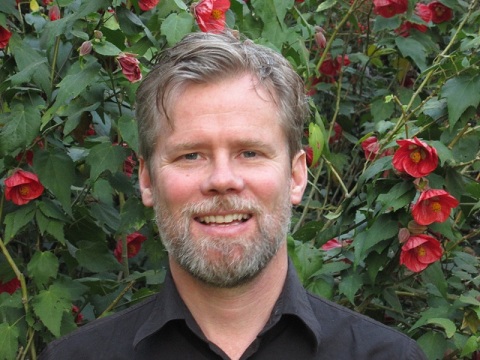This article originally appeared on 7×7.com and is reprinted with permission.
September 17, 2010. At a monthly gathering of 50 executives, I listened to a one-minute piece of advice from each about Shareable, the nonprofit online magazine I cofounded a year earlier. We believe that sharing our resources is more fulfilling than our outdated earn-and-spend MO and that sharing can address issues like poverty and global warming. Due, in part, to the recession, a wave of sharing platforms have cropped up, making it possible to create an entire lifestyle based on sharing cars, housing, nannies — even money. In that meeting of the minds, one message broke through: If I want to lead a movement toward a new sharing economy, I need to show the world how I, myself, share in everyday life. So began my year of living the shareable life, which I chronicled on shareable.net. Unsure at the outset whether my experiment would make a difference, I began in January of 2011, armed with the knowledge of several Bay Area-based services that help people share. I tried about 30 ways to share and saved a ton of money. Here are the highlights.
Experiment No. 1: Sharing Cars
I donated my beloved 1986 Volvo surf wagon to charity back in 2009. For the most part, I rely on my bike and public transportation and use my wife’s car on weekends. But, when her car isn’t available, I rent cars the old-fashioned way — at Enterprise. Each time I rent, I’m forced to endure the robotic corporate ritual of being pitched insurance. I say no every time. Finally at my wit's end, I decided to rent my next car from a human.
Enter Getaround, an online peer-to-peer car sharing service that helps you find a car in your neighborhood or rent out your own by the hour or day. I’ve been able to find cars at half off the price of major rental companies, and Getaround handles the details. Of course, sharing isn’t always easy; Getaround is only available in a few places (SF Bay Area and Portland), and the process can be inconvenient. Once you make your rental request, the car owners must accept before you get the keys. They might not check their email. And they can turn you down.
My first Getaround rental was from Sara, an eco-minded paralegal who lived near my house. After storing my bike in her garage and eating strawberries from her aquaponic garden, she handed over the keys to her Toyota Scion, known as DaffodilPickle on Getaround. As I got in the driver's seat, I thought of my nightmare scenario — wrecking the car of this sweet person who is trying to do something nice for the environment. Assured that the car was insured by Getaround, I drove away thinking, “Holy shit. I just rented a car from a stranger!”
The bottom line: Going car-free saves money. AAA estimates that driving a big car costs 92.6 cents per mile in all. At the national average of 10,000 miles a year, that’s more than $9,000. By sharing cars in 2011, I saved $4,000.

Lending Club offers solid returns for social lending. Photo credit: Jeremy Vohwinkle. Used under Creative Commons license.
Experiment No. 2: Breaking Up with the Bank
After a long, tumultuous relationship with Wall Street, I broke it off permanently in 2011. The abuse was just too much. Our bank, Wells Fargo, had skimmed $1.8 billion in unnecessary overdraft charges from its clients, and my wife and I lost $10,000 in stocks thanks to mismanagement by our retirement fund manager.
So we cashed in everything we could. We sold stocks or bonds that seemed risky and decided to give LendingClub a try. Why not lend money to strangers? It may not sound like the safest bet, but the advantages of social lending are compelling.
Social lenders broker online deals between individual borrowers and lenders at better rates than what banks offer. For instance, instead of the sub-one-percent return I used to get from my savings account, I’m now earning nine percent, LendingClub’s average. This is within spitting distance of long-term stock market returns (around 12 percent if you invest passively in an index), but with much less risk and volatility. LendingClub makes it safe to invest, sorting loans by risk, return, and term. The service encouraged me to make small $25 loans to many people. I found the loans I wanted in 30 minutes.
In one year, I’ve invested about five percent of our retirement savings in LendingClub. No defaults yet. One late payment. Investing this way is more work than a savings account or a mutual fund — I have to regularly reinvest — but it’s worth it. In 2011, my LendingClub income was $508 at a 9.2 percent annual return. That’s $148 more than I earned in the stock market in 2010. (I’m a horrible stock market investor.)
Experiment No. 3: Redefining the Rental
I needed a hotel for five nights in New York. After searching first on Hotels.com and finding a string of rooms all priced at more than $300 a night, I decided to check out Airbnb, the San Francisco-based peer-to-peer service where you can find private vacation rentals and short-term stays or host travelers in your own home. It was there that I booked a one-of-a-kind stay in a cabin inside a loft — you heard right — for $75 a night in Brooklyn.
When I arrived at my cabin-in-a-loft, my architect-host Terri served me a frosty beer and her delicious, homemade organic vegetable chili. Sitting at her kitchen table, Terri told me how she hoped the cabin would be a cozy little getaway inside her big open space. She also shared her tips for local restaurants and offered me a homemade brownie for dessert.
Terri’s warm welcome set the tone for my stay, and I went home feeling uplifted. I felt good about the world. And I saved more than $1,000.
Experiment No. 4: Coworking
In March of 2011, my nonprofit, Shareable, moved into Hub SoMa, a 20,000 square-foot open-plan office shared by companies including The Biomimicry Institute and Change.org. For folks who would otherwise work at home or in a coffee shop, the Hub is appealing because of its community-focused coworking space that brings a certain amount of serendipity to the office. On any given day, opportunity may meet you on the spiral staircase — that’s where I scored from Hub CEO Cory Smith a rubber stamp that says, “This once belonged to:” (perfect for a swap) — or at the host desk, where Roe Cummings gave me a great tip for a story on Shareable. I even landed a $6,000 grant for Shareable on a lead from a fellow member.
Here’s how it works: Pricing is structured much like a gym membership, letting you pay based on your level of use, from 25 hours a month to a full-time private suite. Next year, Shareable will pay just $4,700 for our three employees (who have memberships ranging from 25 to 50 hours a month). My membership is $119 — $56 less a month than my old desk in a depressing office.
Working out of Hub is flexible, low-cost, and has no administrative overhead. Plus Shareable doesn’t have to negotiate a lease or worry about utilities, cleaning, or security. It’s all included. Approximate savings: $2,000 a year.

Hub SoMa offers a ready-made office space to be shared. Photo credit: Sarah Brooks. Used under Creative Commons license.
Experiment No. 5: The Nanny
My biggest savings came when our son, Jake, was born. We’re two working parents, and the idea of leaving him, just a tiny child a few months old, alone with strangers repulsed us. And we couldn’t afford a private nanny, which would cost us around $35,000 a year. We decided to investigate nanny sharing.
The trick is to find the nanny first. Once we had her, other parents felt more comfortable because they could see what they were getting into. For two years now, we’ve shared our nanny, Vilma, with two other families. She’s great. She stays with Jake on weekdays at our house. Our friends, Tam and Stuart, drop off their daughter, Taryn, three days a week. Maryann and Mark drop off Kayla on the remaining days.
I think we’ve been lucky. The arrangement is more flexible than daycare, and we found a nanny Jake loves. She provides a high level of care and is perfectly reliable. Of course, if Vilma calls in sick, one of us has to call in sick. But we’re not responsible for the other family’s childcare in case of a last-minute cancellation. We all save money, and our nanny makes more than she would working for just one family. It’s a win-win-win. Savings in 2011: $10,800. Plus, we’ve made new friends for potluck dinners, and I get to spend time with Jake on days that I’m working from home. Priceless.
My year of living the shareable life taught me some surprising lessons. The toughest to swallow is that the modern world isn’t designed for sharing — yet. In most states, renting your car to a neighbor may put you at risk of losing your insurance should your neighbor wreck it. And, in New York, it’s actually illegal to rent your apartment for stays longer than 30 days. Change is difficult. I’m no Pollyanna.
But the architect Buckminster Fuller once said, “You never change things by fighting the existing reality. To change something, build a new model that makes the existing model obsolete.” Those 50 executives were right: The world needs role models in order to make change. I hadn’t thought my blog would make a difference, but I was wrong. My story was picked up by Fast Company, Sunset, and NBC Nightly News, reaching tens of millions of people with the message that sharing is both good for the soul and a savvy financial move. At the end of the day, I reaped the personal reward of sharing with my neighbors. And I have an extra $17,000 in my pocket.
##
For more on how to boost your quality of life and save money, check out our sharing how to guide here.









